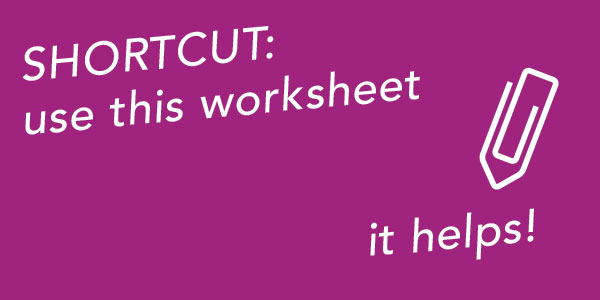Position Your Brand Before Your Customers Do
The raw truth is that you have no control over how your brand is actually perceived in someone’s mind. But, that doesn’t mean you can shrug it off and ignore the work needed to develop a position. Forging ahead without understanding how your brand is truly different—and hoping you connect with your target customer at the right time and place—is like a driverless Mac truck. Understanding how you would like your brand to be perceived makes your marketing decisions easier and more effective.
People often confuse a positioning statement with a tagline, which is part of your brand. When positioning comes first, insights gained from working through the strategy can be effectively worked into a tagline. In thinking about how you want your brand to be perceived, you can subtly steer your audience toward this goal if you let the positioning statement influence the tagline.
So, let’s get right to it. What’s the difference between branding and positioning? The key is exactly that—differentiation. A thorough positioning strategy will help you define this point of differentiation in light of your competitors. Branding does not take competitors into account—you are simply presenting who you are and (hopefully) what you do. Positioning statements are for internal use only and help you make informed decisions on steering your customer’s perception of your brand.
Key In Your Value Propositions
I like to use this Messaging Matrix (PPT) to help clients step back and identify what they truly are going after in their business models. If you’ve never used a worksheet like this, let’s walk through it:
- Start with one or two words for each column, writing down what you think your key value proposition is. These could be “eco-positive” or “heirloom quality”.
- Next, back up your values with short phrases. These are your supporting messages. For example, you could say “sustainably sourced heirloom pieces crafted with care”.
- Skip back up to the key messaging area. Take stock of your supporting messages in each column underneath your value propositions. Write a full sentence that sharpens the focus of that key value. An example for “heirloom quality” could be “Each signature piece is artfully designed and articulated with master craftsmanship.”
Finally, we arrive at the positioning statement. You should have unearthed some key points of differentiation between you and your competitors by working through the three steps above. Pick the one that’s most evocative of an emotional connection with your target customer, and read on for a four-part formula that helps you arrive at a strong positioning statement.
Nail It In Four Steps
Roll up your sleeves, let’s get down to it and identify these four pieces:
- Target Customer: Who are they? What gender? What age range? What does a typical day look like for them?
- Frame of Reference: This is the category in which the brand competes.
- Point of Difference: The absolute most compelling benefit that the brand can offer relative to the competition.
- Reason to Believe: Proof that the brand delivers what it promises.
Here’s the formula that structures your statement:
For (target audience), (brand name) is the (frame of reference) that delivers (benefit/point of difference) because only (brand name) is reason to believe).
An example of powerful positioning is Zipcar’s 2000 pre-launch statement: “To urban-dwelling, educated techno-savvy consumers, when you use Zipcar car-sharing service instead of owning a car, you save money while reducing your carbon footprint.”
When To Do It and Why It Matters
For startups, working through the positioning strategy can greatly assist in defining their ideal customer and why that customer should believe in their new brand. For existing companies, a re-positioning may need to occur if the company pivots or growth has slowed. Either way, actively positioning your brand lays a solid foundation for future marketing initiatives and campaigns. The best advice I’ve personally ever received on this topic was “do it before you even really start”. Positioning before the starting line gives you confidence when you start to outlay capital and your own time into a venture. You’ve got the roadmap.
Don’t Forget…
One more thing. Don’t forget asking for company-wide buy-in. Every customer touchpoint of your business must exhibit the same stance. Having a great positioning statement and key messages to back it up will go a long way in ensuring continuity for your brand communications both internally and externally.






